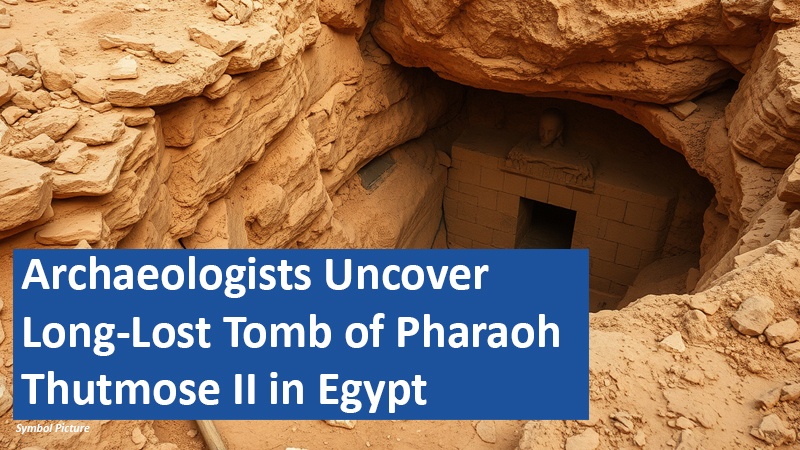
In a groundbreaking discovery, archaeologists have found the long-lost tomb of Pharaoh Thutmose II in Egypt. This marks the first royal tomb uncovered since King Tutankhamun’s discovery over 100 years ago, representing a significant milestone in Egyptology.
######################################################
Now exclusively try Amazon Prime and Prime Video free for 30 days!
##########################################################
The Path to Discovery
The search for the tomb began with an unexpected find: the remains of a sacrificed calf. Dr. Judith Bunbury, lead researcher on the project, explains: “When a tomb is created, all materials imbued with the magic of the pharaohs must remain with it. These are placed at a respectful distance in guardian pits or foundation deposits.” What initially appeared to be a foundation deposit turned out to be the entrance to the long-sought tomb.
Challenges During Excavation
Archaeologists faced significant obstacles. The tomb’s entrance and corridors had been severely damaged by repeated flooding since Thutmose II’s death in 1479 BC. Despite collapsed ceilings and hardened debris, the team managed to access a chamber with traces of decoration: a ceiling fragment with a blue sky and yellow stars.
Identifying the Pharaoh
Several inscription fragments were crucial for identification. One began with “Son of Re, of his body, Thut[…]”, another read “The perfect god, the Lord of the Two Lands Aakheper[…]re…”. The final fragment “…great chief wife his beloved… Hatshepsut, may she live…” confirmed that the tomb belonged to Thutmose II.
Significance for Egyptology
The discovery of Thutmose II’s tomb is a major step in researching Egypt’s 18th Dynasty. Piers Litherland, Director of the NKRF, emphasizes: “Initially we thought we might have found the tomb of a royal wife, but the wide staircase and the large doorway suggested something more important.” This find promises to expand our understanding of the Pharaonic era and provide new insights into royal burial practices.
The discovery of Thutmose II’s tomb sheds new light on the fascinating era of the pharaohs. It opens up new research opportunities and promises to deepen our understanding of ancient Egypt. As archaeologists and historians continue to unravel the secrets of this royal tomb, we can eagerly anticipate what further insights into the life and reign of Thutmose II will come to light.
What other secrets will Thutmose II’s tomb reveal? And how will this discovery change our understanding of ancient Egypt? Share your thoughts in the comments.
Based on content from www.ladbible.com and own research.